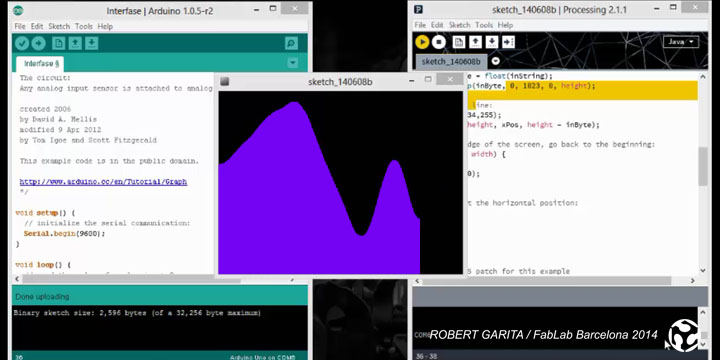
Interface and Application Programming

Serial Communication is the process of sending data one bit at a time, sequentially, over a communication channel or computer bus. This is in contrast to parallel communication, where several bits are sent as a whole, on a link with several parallel channels.
Serial Communication is used for all long-haul communication and most computer networks, where the cost of cable and synchronization difficulties make parallel communication impractical. Serial computer buses are becoming more common even at shorter distances, as improved signal integrity and transmission speeds in newer serial technologies have begun to outweigh the parallel bus's advantage of simplicity (no need for serializer and deserializer, or SerDes) and to outstrip its disadvantages (clock skew, interconnect density). The migration from PCI to PCI Express is an example.
Fab Academy Barcelona Class No.16
Assignament: Interface and Application Programming
By Robert Garita
Machines:
-Roland Modela MDX-20 milling machine
-Soldering Iron
Software:
-Modela
-Eagle
-Arduino
This example shows you how to send a byte of data from the F_Duino to a personal computer and graph the result. This is called serial communication because the connection appears to both the F_Duino and the computer as a serial port, even though it may actually use a USB cable.
You can use the F_Duino serial monitor to view the sent data, or it can be read by Processing (see code below).
Hardware Required:
F_Duino Board
Analog Sensor (Potentiometer)
Software Required: Arduino and Processing
Connect a potentiometer or other analog sensor to analog input 0.
Processing Sketch: Using the Processing sketch in the code sample above, you'll get a graph of the sensor's value.
On this diagram you can see how it the circuit works:


Just click to download the Arduino and the Processing code.


As you can see in the pictures and also in the video, when you start moving the potentiometer, the serial communication between the Hardware and the Software change immediately in a range between 0 to 1023 bits, creating through Processing the oscillation of the curve